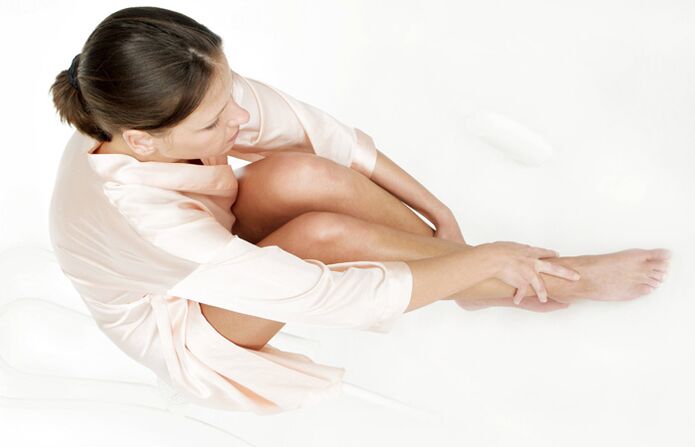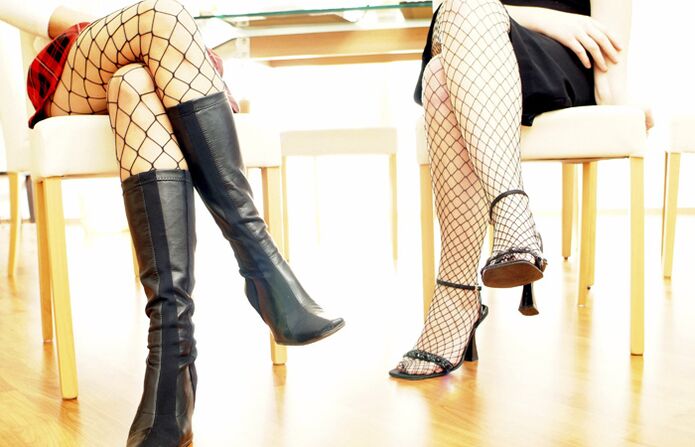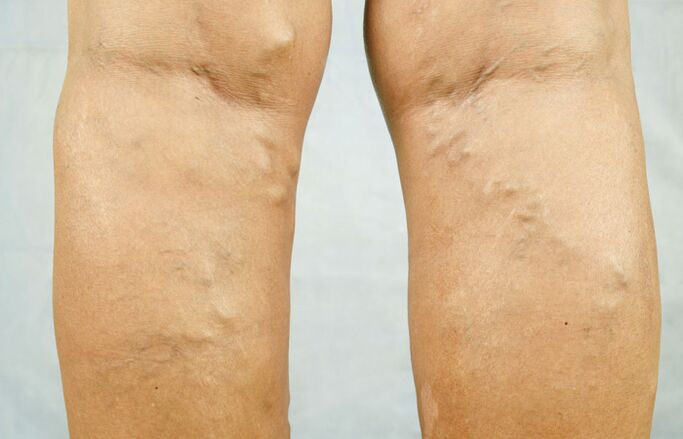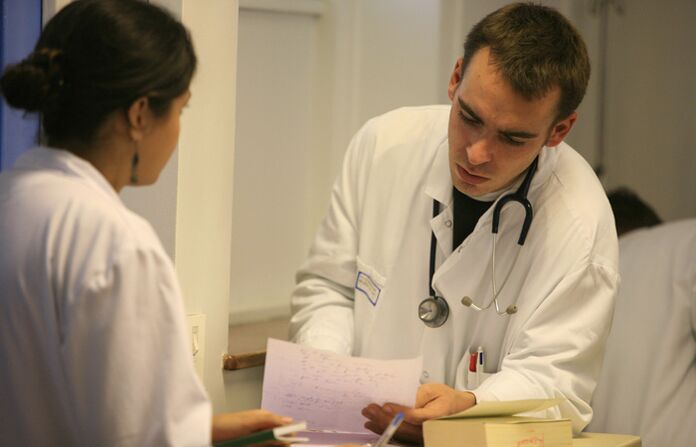Rainy autumn is coming - a time when we move less and sit a lot, wear heavy shoes all day, take hot showers more often and longer. All this does not have the best effect on our blood vessels, and especially on veins with varicose veins.
Use a little moisture in life to your advantage: keep your feet healthy.

What are varicose veins?
It seems that everything is very clear: these are dilated and visible veins on the legs.
However, such changes are not just a cosmetic defect, but a dangerous manifestation of varicose veins.
What is happening?
The superficial veins of the lower part expand, which leads to the creation of conditions for slowing down blood flow and the formation of thrombi (blood clots) in the lumen of blood vessels.
danger
Due to the lack of nutrition and blood supply, trophic ulcers appear - long-term non-healing skin defects on the legs.
The resulting blood clots can break and travel with the blood throughout the body. What does this mean? The development of thromboembolism: the lumen of the vessel is suddenly blocked and an obstacle to blood flow is created. Various organs are affected: acute cerebrovascular accident (stroke) or infarction (myocardium, kidney, lung) may occur. These complications are life-threatening and often lead to disability.
What else is known about varicose veins?
The older a person is, the higher the risk of getting varicose veins. This disease has no gender or age. This disease can also occur in children, although it is relatively rare. Women get sick more often than men.
A short tour into anatomy
Our blood moves through the systemic and pulmonary circulation.
It's normal
The heart beats rhythmically and pushes blood through the vessels. Thanks to the force of gravity from top to bottom, blood moves easily through the arteries.
After reaching the legs, the blood turns and begins to move back through the veins - from the legs to the heart. Without additional anatomical structures, this process is difficult, because the blood will simply flow back. It is to ensure normal blood flow that nature has provided valves in the veins that allow blood to flow in only one direction - up.
The heart, vein walls and valves have assistants - leg muscles. Thanks to the energetic work of the muscles, the blood vessels in the legs contract and relax, pushing blood upwards from valve to valve.
For varicose veins
The vein wall weakens, expands and lengthens. In this case, the valve stops closing, a gap is formed between them, which leads to a slowdown in blood flow. Over time, a vicious circle develops: the slower the blood flows, the more the veins stretch and the worse the valves work.
Our veins are attacked
It is believed that varicose veins are a hereditary disease (in 98% of cases). Certain genes are passed down to us from our ancestors, causing weakness of the vein walls and low venous valves. However, even in this case, the disease does not always develop.
Additional unfavorable factors:
- Overweight or obese.
- A person is engaged in heavy physical work, lifting weights, and standing on his feet for a long time.
- Intense sports, leg injuries.
- Sedentary lifestyle: a person has to sit for a long time - for example, 6-8 hours a day in front of a computer or in a car.
- In women - wearing heels, pregnancy and childbirth, taking hormonal contraceptives (blood thickens).
- Chronic constipation.
- Nutritional characteristics: increased amount of carbohydrates, lack of vegetables and fruits. Because the body does not receive the necessary substances to restore the structure of the vein wall.

How to recognize varicose veins? What to do?
This disease has several stages of development with the gradual addition of new symptoms. Only doctors understand this.
You can independently assess the health of your veins and/or suspect disease progression.
When to go to the doctor
At the first signs of the disease: swelling, heaviness or pain in the legs, sometimes cramps in the calf muscles. In this case, there may be no visible changes in the veins of the lower leg.
And, of course, you need to see a doctor as soon as possible if veins appear in your legs. Moreover, it doesn't matter which vein and how strong it looks. This may be a dilated vein with bluish nodule formation. Sometimes a small change in the shape of the vascular pattern - the so-called "star" or "snake", which is an early sign of varicose veins.

Correct diagnosis is the basis for successful treatment
Doppler ultrasound and duplex angioscanning of the leg veins were performed. Research is informative starting from the early stages of the disease: when there are only complaints, and there are no visible changes in the veins.
From tablets and ointments to surgery
For varicose veins, contactphlebologist. The sooner the doctor takes care of your foot health, the more effective the treatment.
The "gold standard" is varicose vein removal surgery, which has been carried out for decades. This intervention is quite traumatic and is performed in a hospital under anesthesia with incisions and sutures.
However, modern medicine takes a gentle and comprehensive approach to solving the problem.
The choice and combination of methods depends on the severity of the disease:
- Phlebotonics and phleboprotectors are prescribed - drugs that improve the condition and tone of the vein walls, increase the outflow of venous blood from the lower part of the leg.
- Blood thinners, inflammation reducers, and pain relievers are used.
- Wear therapeutic compression stockings (stockings/tights). The class is chosen by the doctor depending on the stage of the disease or for preventive purposes.
- Minimally invasive surgical interventions: sclerotherapy, endovenous laser coagulation, radiofrequency destruction of veins. The changed vein is "glued" or "sealed. "This procedure lasts about an hour, and after some time the patient returns home. Advantages: no wounds, infections, suppurations. Thanks to technology, the risk of complications is close to zero.
Can varicose veins be cured?
Nope. If a person inherits a disease from his ancestors, then no doctor can cure this disease forever.
You can remove the consequences of the disease, stop its further development and get rid of complications. However, there is still a relatively high risk of recurrence. Therefore, follow your doctor's recommendations and try to avoid situations that negatively affect the health of your veins.
Flying style: prevention of varicose veins
Almost everyone is at risk of developing varicose veins, so it doesn't hurt for all of us to follow simple rules in certain situations.

During pregnancy
Hormonal changes and compression of the inferior vena cava by the pregnant uterus lead to blood pooling in the lower leg veins.
How to proceed
Choose compression stockings with your doctor. When signs of the disease appear, phlebotonics are prescribed.
In standing or sedentary work, heavy lifting
Blood circulation worsens and the load on the lower leg increases.
How to proceed
Avoid tight clothing and stockings with tight elastic bands. Do not wear shoes with heels higher than six cm. While working, move more often, change your position and do simple exercises.
When sitting, avoid crossing your legs, crossing your legs, or putting one or both legs under you.
With an inactive lifestyle
Blood stagnates in the veins of the lower leg.
How to proceed
Engage in sports that put dynamic stress on your lower legs. By contracting and relaxing, the muscles increase the movement of blood in the vessels. Swimming, running, jogging, cycling are suitable.
With a hereditary tendency
There is a high probability that the disease gene will manifest itself sooner or later. Moreover, it does not matter which vein was weak in our ancestors - hemorrhoids, in the legs or in the groin.
How to proceed
Visit a phlebologist once a year for a preventive checkup. Try to move more and avoid situations that adversely affect the veins.
P. S.Varicose veins are a "silent" disease. For a long time, the disease did not cause pain, did not cause inconvenience and did not interfere with life. Unless "mesh" is considered an annoying cosmetic defect. Meanwhile, a timely visit to the doctor will help avoid many problems.

















